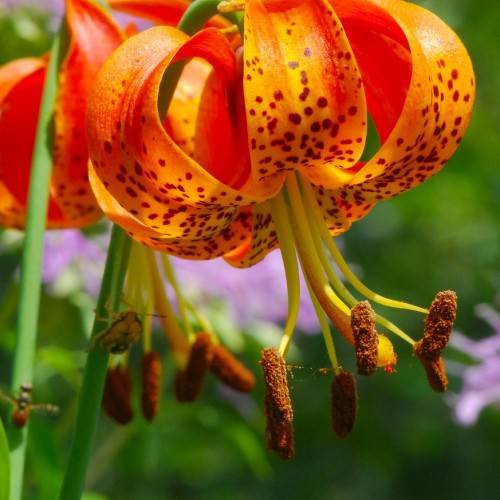
Michigan lily
Lilium michiganense
Cycle:
Perennial
Watering:
Frequent
Hardiness Zone:
4 - 8
Flowers:
Flowers
Sun:
Full sun,part shade
Leaf:
Yes
Growth Rate:
Low
Maintenance:
Low
Drought Tolerant:
Yes
watering
Michigan lilies should be watered deeply once a week during its growing season. New plants need to be thoroughly watered every few days until they become established. During the hottest summer months, Michigan lilies should be watered twice a week to ensure adequate moisture. When watering, make sure that the soil is moist to about 3-4 cm (1-2 inches) below the surface. During the winter, when the Michigan lily is dormant, the watering should be reduced to only once a month.
sunlight
Michigan lily requires full sun to thrive, which means it should receive direct sunlight for around 6 to 8 hours each day. In general, lilies need at least 6 hours of full or partial sun per day to bloom, so Michigan lilies should be planted in a location that receives ample direct sunlight. During the summer, its best to give your Michigan lily the most direct sunlight possible in the morning and afternoon, while providing some shade in the middle of the day when temperatures are at their hottest. In areas with high temperatures, it is best to provide some shade during the hottest part of the afternoon or early evening to protect your plant.
pruning
Michigan lily should be pruned in late spring or early summer, after the plants have become established. Pruning should be done sparingly, as too much pruning can damage the flowers and buds. Remove dead stems, diseased stems and any stems that have grown to an unmanageable height. Trim the stem tips to encourage bushier growth and remove the flowers once they start to fade. This helps increase the flowers yield in future years. Some people prefer to cut the stem halfway between the soil and top when pruning.
